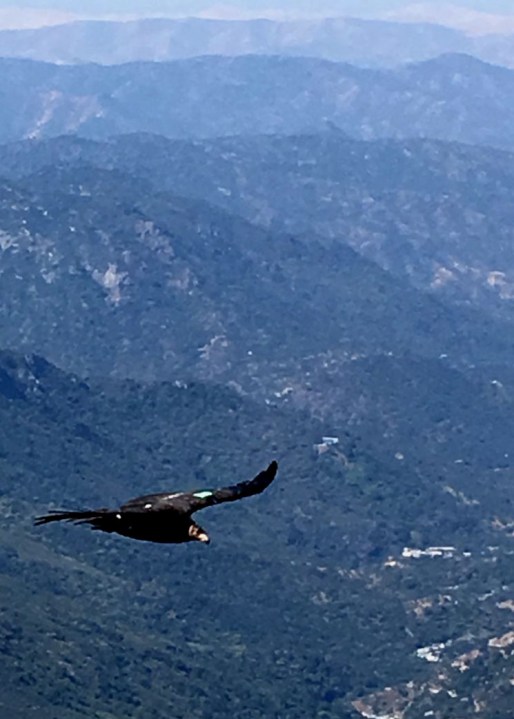For the first time in at least three decades, California condors were spotted in Sequoia National Park, an area that was historically part of the endangered bird’s range, officials said Tuesday.

At least six of the majestic scavengers visited the park in late May, including four seen flying near the famed Giant Forest and at least two near Moro Rock, a geologic dome and popular hiking spot, the National Park and U.S. Fish and Wildlife services said in a joint statement.
The biggest land bird in North America, California condors once inhabited the length of the Pacific Coast from Canada into Baja California. The birds disappeared from the wild by 1987 due to poaching, lead poisoning and habitat destruction, but a captive-breeding and release program has helped them resurge in their native habitat in recent years.
“Condors were consistently seen throughout the parks until the late 1970s. Observations became increasingly rare throughout the latter portion of the century as the population declined,” Tyler Coleman, a wildlife biologist with Sequoia and Kings Canyon National Parks, said in a statement.
Before their near extinction, the birds were known to nest in the cavities of giant sequoias throughout the Sierra Nevada. Wildlife biologists at the Santa Barbara Zoo now use GPS devices to track their movements, and were able to confirm condors had returned to the towering trees and cliffs within the national park.
“We use GPS transmitters to track the birds’ movement, which can be over hundreds of miles on a single day,” said Dave Meyer, one of the zoo’s biologists. “On this particular day we documented the birds’ signals around Giant Forest, and we are excited that park employees observed the birds and confirmed their use of this important historic habitat.”
Data from the GPS trackers can also help researchers identify which habitats are vital to the species, where they are nesting and feeding, and the location of condors that are sick, hurt or dead.
The primary threat to the species’ recovery is lead poisoning, responsible for half of all condor deaths in which a cause can be identified, officials said. The birds scavenge for food, feeding on carcasses of dead animals, which often contain fragments from lead bullets used by hunters and ranchers.
“Lead-core bullets shed weight in small fragments as they hit game, and have the potential to poison wildlife, including condors, who scavenge the remains,” said Chad Thomas, an outreach coordinator with the Institute for Wildlife Studies.
Thomas said his nonprofit is working to educate communities that share condor habitats on the impact of ammunition to conservation, as well as non-lead bullet options.
The birds have recovered to a wild population of around 340 from just 23 in 1982, at which point survivors were brought into captivity to preserve the gene pool through captive breeding at the Los Angeles Zoo and San Diego Wild Animal Park.
They were first released back into the wild in 1992 in the mountains of the Los Padres National Forest. That flock has since grown to an estimated 100 birds, and in December 2018 a condor chick fledged in the wild in Santa Barbara County for the first time since 1982.
The flock is continuing to expand its range and can now be found in parts of Ventura, Santa Barbara, Los Angeles, San Luis Obispo, Kern, Tulare, Fresno and Madera counties, and the Sierra Nevada mountains and adjacent foothills. Condors have also returned to California’s Central Coast, including Pinnacles National Park, as well as Arizona, Utah and Baja California.
Click here to see more photos of the birds taken by Sequoia National Park staff in late May.





















